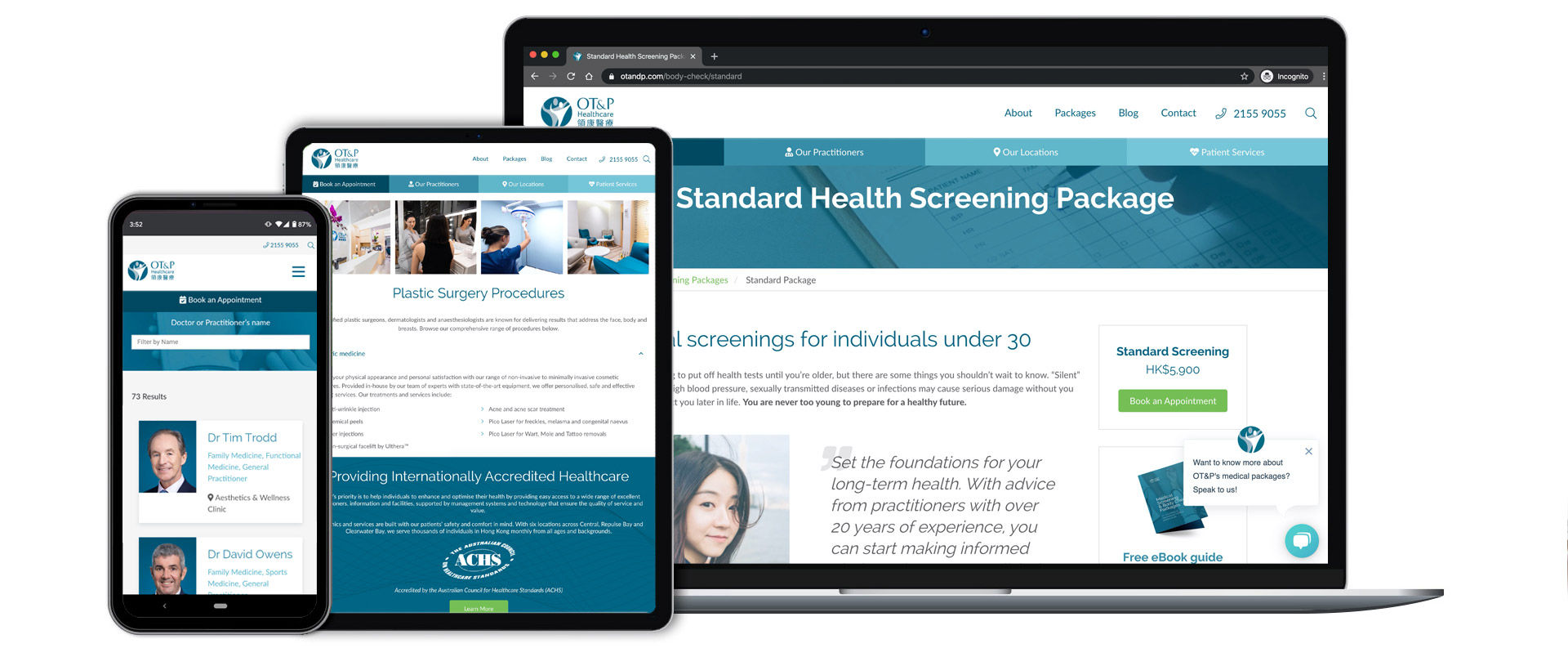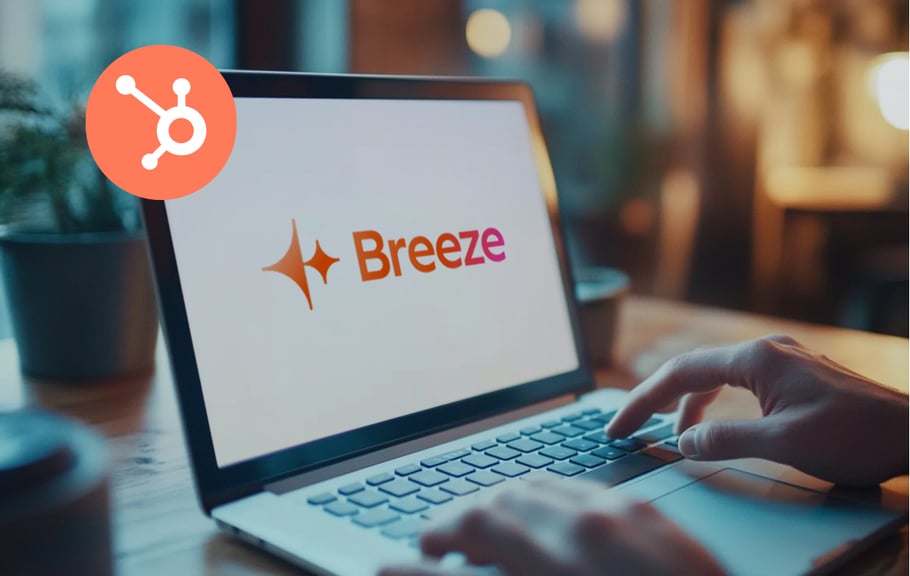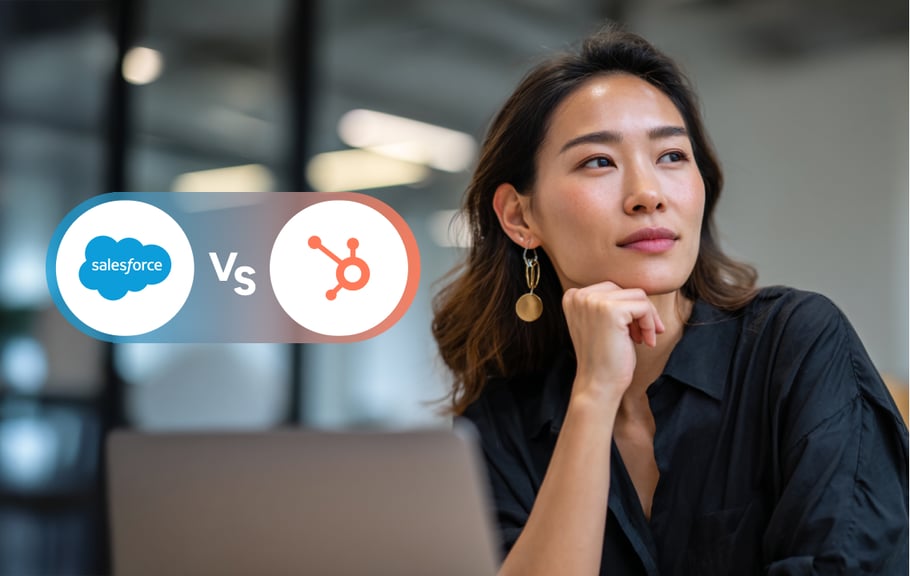Listen to this blog post read by our CEO, Gareth Jones.
Building a standard B2B website listing your services and 'about us' page is easy. Building a conversion-driving B2B website that looks great and acts as your best salesperson is the real challenge.
Great B2B websites need to attract, educate and convert leads (who have shorter attention spans) and adapt to cultural differences, political sensitivities, and language barriers, which is particularly important in Asia.
As the COO at Oxygen, I was behind six of Oxygen's latest international website and marketing awards in 2019. In this blog, I'll teach you how to build a new B2B website that will not only please management or act as the fresh digital 'face' of the business but also make a real difference in how your business drives leads, sales and revenue.
How to Build a Successful B2B Website
1. Define your buyer persona

Great website experiences are intuitive and have everything your visitor is looking for. The key to creating this is understanding precisely what problems you should solve for your visitors or potential visitors.
This is why you should start with defining your buyer persona. A buyer persona is a semi-fictional representation of your ideal customer based on market research and actual data about your existing customers. Find out more about how to define your ideal customer profile here.
Ensure they have been recently updated (within a year or two), are well-researched and aren't based on superfluous psychographic data like gender, hobbies, education etc.
If you plan on marketing to the Chinese market, which is entirely different from all other markets, detailed buyer persona information specific to that market is imperative to success.
2. Choose a good B2B website software
Many businesses have an existing technology stack created or chosen by an IT department. In most cases, these systems are ancient, need to integrate better and require significant ongoing investment to keep alive and running.
In 2023, the enterprise SaaS service market expanded significantly, offering medium to large-sized businesses an even greater array of powerful platforms. These advanced solutions come with extensive pre-built integrations, harnessing cutting-edge technology and AI capabilities, all at a remarkably competitive cost.
Wondering if you need to upgrade your tech stack and modernise your marketing campaigns? Start by yourself with the following questions:
- Do we use a CRM system, and is it any good if we do?
- Do we properly utilise marketing and sales automation?
- Are our reports automatically generated and covering all KPIs?
- Are your marketing and sales systems adequately integrated with your website?
- Do you use a chatbot feature to pre-qualify leads and requests?
- Do you currently have a customer service system?
If you answered "no" to these questions, you should consider moving to a better CRM system with an automation set-up. Learn more about how HubSpot CRM can boost your sales with its wide range of integrations and features.
3. Define your KPIs and goals
KPIs (Key Performance Indicators) are the most important measures that can help you gauge your success.
Declare your goals first and work back from them using as much data as possible to create realistic KPIs. These can be simple, as in most cases, the agency should be able to do the legwork and reverse engineer what needs to be done based on the goals. For example, if your goal is:
We would like to triple our online customer acquisitions within a year.
From here, by doing keyword research and investigating current performance, you (or your agency) should be able to deduce how much inbound marketing, advertising and other actions will be needed to achieve your goal.
4. Invest in content over advertising
Studies have shown inbound marketing to be 5.66x more effective than advertising regarding ROI. When you pay for advertising, you pay-per-click; when you stop paying, it completely dies off. It's common for a business to have massive advertising budgets and very little for content creation.
The most successful online B2B websites are almost always content creation leaders and use their content to attract, educate and nurture visitors into leads. Blogs, ebooks, videos, pillar pages, and SEO are all fundamental in building the blocks of quality content.
These days, Google is smart enough to tell the difference between a quality blog and a fluff piece rehashing the points of a few other blogs – invest in quality over quantity and don't get penalised for creating low-quality or spammy content.
5. Ensure your B2B website is well designed

“76% of people answered that the most important factor in a website’s design is the ease of use.” HubSpot
To design a good B2B website, you should prioritise a clear value proposition, especially on main pages, and feature intuitive, device-friendly navigation. Strengthen trust with potential clients by showcasing trust signals, such as client logos, testimonial snippets, and certifications, on landing pages and the home page.
Case studies offer exceptional value, helping educate prospects about your products or services. Keep contact forms simple to reduce barriers and provide comprehensive FAQ information for better lead qualification. If your website is extensive, prioritise SEO efforts on areas with the highest potential for rewards.
Below is an example of a high-performance medical website created by Oxygen and the Q4 2019 HubSpot Website Design Award winner.

Start building your B2B website with an agency
Very few businesses have an internal team capable of handling the design, copy, SEO and automation system integration requirements. In most cases, it's best to outsource to a team (or teams) experienced in these fields.
Choose your agencies wisely. In almost all cases, you do get what you pay for. Taking a smaller agency from a lesser-developed country for 20% of the cost of an established agency from a developed country might seem like a good idea at first until the project ends up being several months overdue and revisions are endless.
Always consult with an expert first before deciding on a timeline. As an agency owner, we often get businesses asking for a 3-4 week turnaround on a website that would need at least 2-3 months to be completed properly.
At Oxygen, we specialise in implementing and optimising B2B websites to help businesses like yours grow and succeed. If you're interested in exploring more, don't hesitate to reach out and let us know how we can support you in getting the most out of your HubSpot experience.
Does your company need assistance with advertising in China? Speak with one of marketing experts to find out how we can help.
 UAE/GCC
UAE/GCC International
International
.webp)









